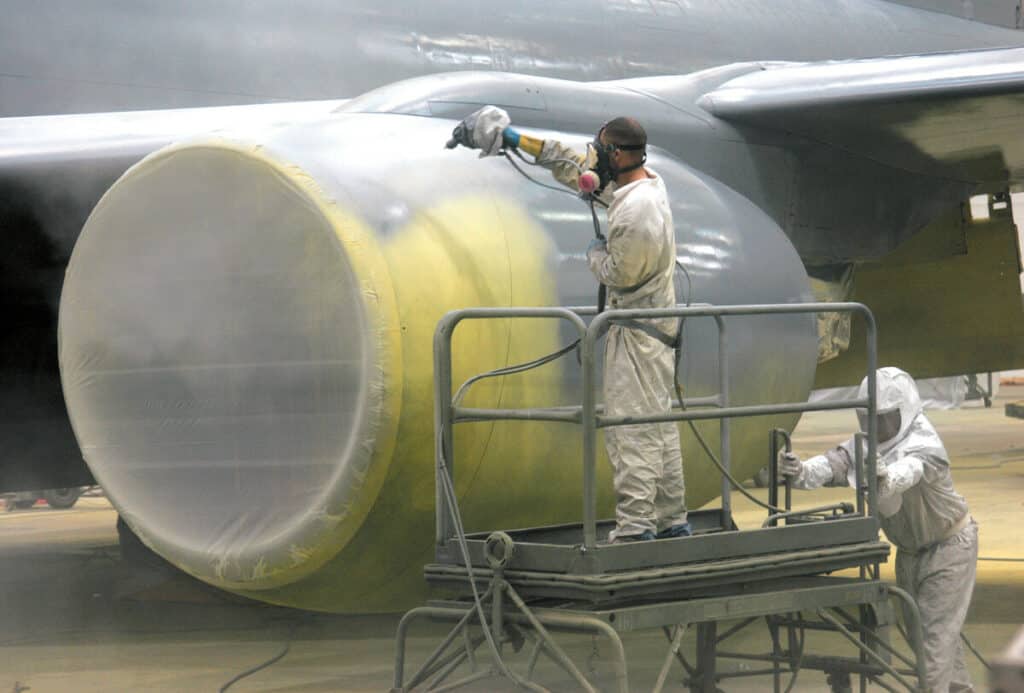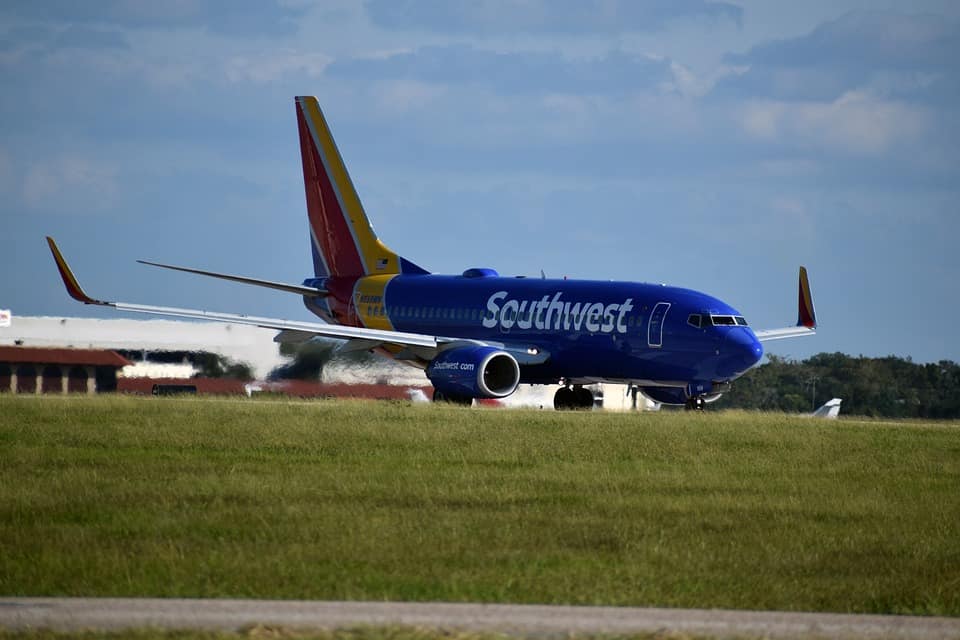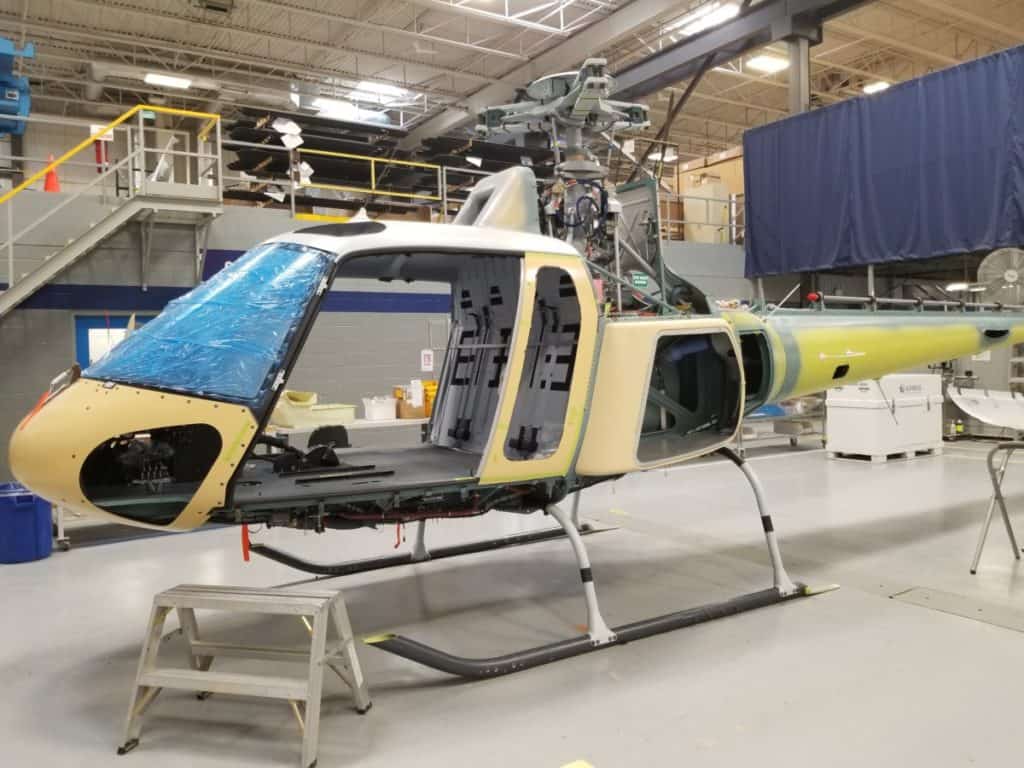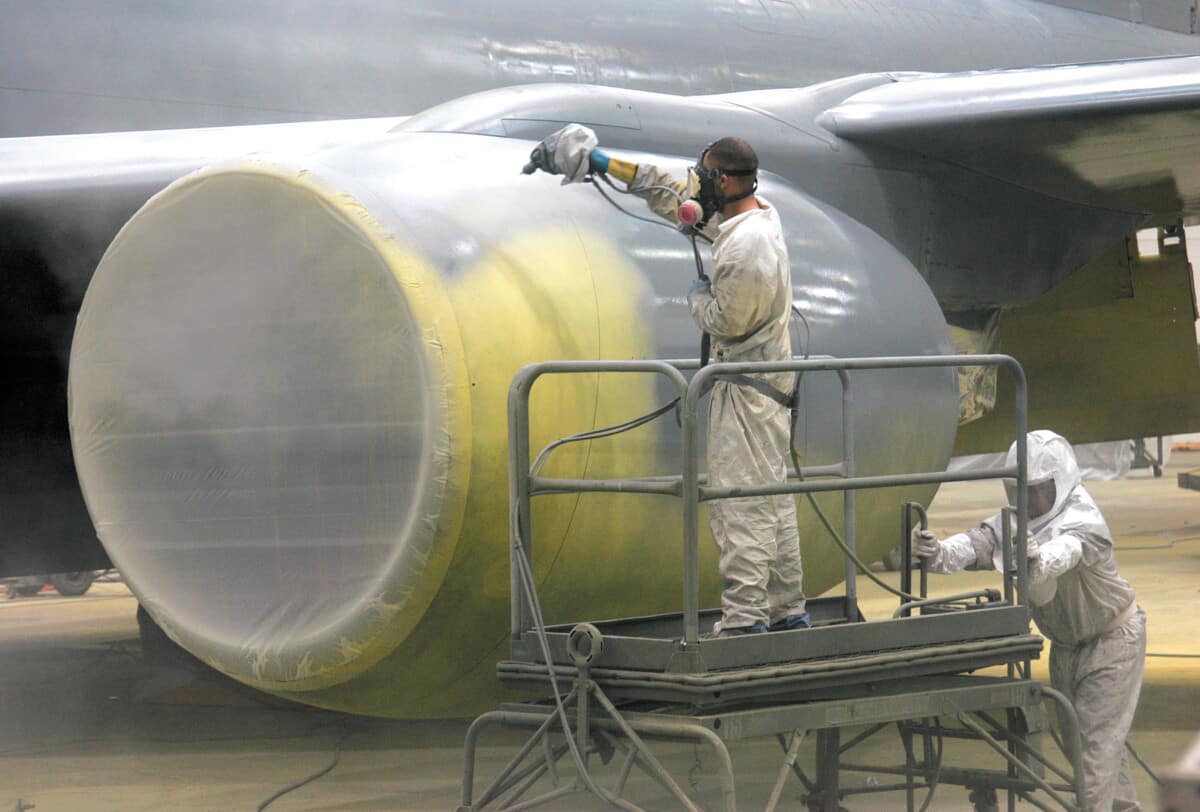
If you have ever painted a room in your home you know it can be a laborious task of masking, painting, and finishing. The thought of having to paint an airplane the size of an Airbus A380 is unfathomable so the question crops up as to how long does it take to paint something that big!?
Painting an airplane typically takes between 1 to 2 weeks, based on the size of the aircraft, complexity of the design, hanger space, and paint crew availability. British Airways reported that for its A319 aircraft, it takes 950 man-hours to repaint, whereas an Airbus A380 will take about two weeks.
When Alaska Airlines joined up with Pixar and wanted to create a “Toy Story” theme for one of their Boeing 737’s a team of artists took 21 days to complete the complex livery by hand using paintbrushes before the painting crew finished the aircraft in its clear coat.
Regular repainting of an airplane is broken down into several stages all with their own timescale:
What is the Process to Paint an Aircraft?
For most aircraft, three layers of paint are used — the primer, the base, and the top coat. The primer is the protective layer that protects the surface of the aircraft from corrosion. Then comes the main paint layer which displays the name and logo of the airline, and finally the top layer which gives the plane a shiny appearance. Painting an aircraft involves many steps:
1. Stripping the Old Paint
Time to Complete: 1-2 Days
The old paint is stripped off the aircraft so that the new paint does not add to the weight of the aircraft.
There are two main methods to strip paint off of an airplane:
- The first method is sanding the paint off, using conventional means, but if not done correctly it can damage the surface of the aircraft
- The second method, which is commonly used, is to spray a solvent that dissolves the old paint, which then falls off with the remaining paint removed with high-pressure water jets.
2. Inspection
Time to Complete: Around 1-2 Days
The plane is then examined by certified inspectors to check for any defects, broken rivets, cracks, etc. These damages are then repaired before the painting process continues.
3. Etching & Applying the Primer
Time to Complete: 1 Day then baked overnight
After the surface has been thoroughly cleaned, the surface is prepared by applying a liquid that etches the surface and provides a molecular layer that protects the fuselage surface against corrosion. The primer paint is then added and is an eco-friendly layer that further protects the fuselage and acts as an adhesive layer for further layers of paint.
4. Base Paint
Time to Complete: 1-2 Days then baked overnight
Next comes the base color using acrylics, enamels, or metallic paints. Thin layers are evenly applied over the entire aircraft providing the main background color for the airplane. White is most commonly used by airlines, unlike Southwest which uses blue or orange for example.

5. Logos & Lettering
Time to Complete: 1-5 Days
Logo, airline name, and unique patterns are all part of a livery of an airline. This aeronautical art is often an important part of airline image. Stencils are made using computer models of aircraft which are then scaled up and applied by technicians.
Each color requires a different stencil to mask off the correct area. Depending on how many colors are used it can take many days to apply a stencil, paint it, bake it, remove the stencil, and then apply the next and repeat.
The more complex the color design, the longer the process takes.
6. Topcoat
Time to Complete: 1 Day then baked overnight
The top layer is a clear epoxy paint that seals all the other layers of paint and gives a high gloss sheen to the aircraft. This coat also protects against UV rays and weather-related damage.
Each layer of paint adds thickness and weight to the aircraft. The additional weight requires more fuel and that adds to the operational cost of the aircraft. Although each layer only is very thin, even then it adds between 300 to 1500 lbs. to the weight of the aircraft.
When the design of the livery is complex and the requirement is temporary, the airline may choose to use special decals which meet regulatory standards but can be easily removed when they are no longer required.

Join My Newsletter & Get Great Tips, Information and Experiences To Help You Become a Superb Pilot!
What Type of Paint is Used on an Aircraft?

There are two main types of paint used on airplanes, enamel, and epoxy:
- Epoxy is a polyurethane-based paint that bonds to the fuselage with incredible strength. Unlike most epoxies, this type of paint remains flexible allowing for movement of the aircraft while not chipping, cracking, or flaking. It is resistant to UV and many chemicals like fuel, oil, and hydraulic fluid making it the preferred choice for most airlines.
- Enamel is a low-cost paint option due to its reduced durability and lifespan. Most small aircraft are painted using enamel to help keep the cost down for the individual owner.
Sometimes a combination of these two types of paints is also used, for example, the enamel is used for the basecoat, company name, and logo, and then it is covered by a layer of transparent epoxy. This makes the paint rugged and durable but at a lower cost.
How Much Paint Does it Take to Paint an Airplane?
Typically, an average-sized commercial airliner requires around two gallons of paint per square foot, while a GA aircraft may only need half that amount. A Boeing 737 is usually painted with about 60 gallons of paint, while an Airbus A380 may need 200-300 gallons for full coverage.
How Often Do Airplanes Get Re-painted?
Airlines typically repaint their planes every 5 to 7 years depending on the weather condition in which the plane is flying routinely. Airframes are subjected to heavy wear and tear over time, which leads to peeling or chipping paint that requires a fresh coat of paint. Aircraft are also painted in the new livery when the aircraft is sold or leased to another airline.
How Much Does it Cost to Paint an Airplane?
Large commercial airplanes can cost upwards of $150,000 to $1 million depending on the complexity of the design. A Boeing 777 may cost somewhere between $150,000 to $300,000, while the price for painting an Airbus 320 is around $50,000. A Cessna 172 may cost only $5000 to paint.


